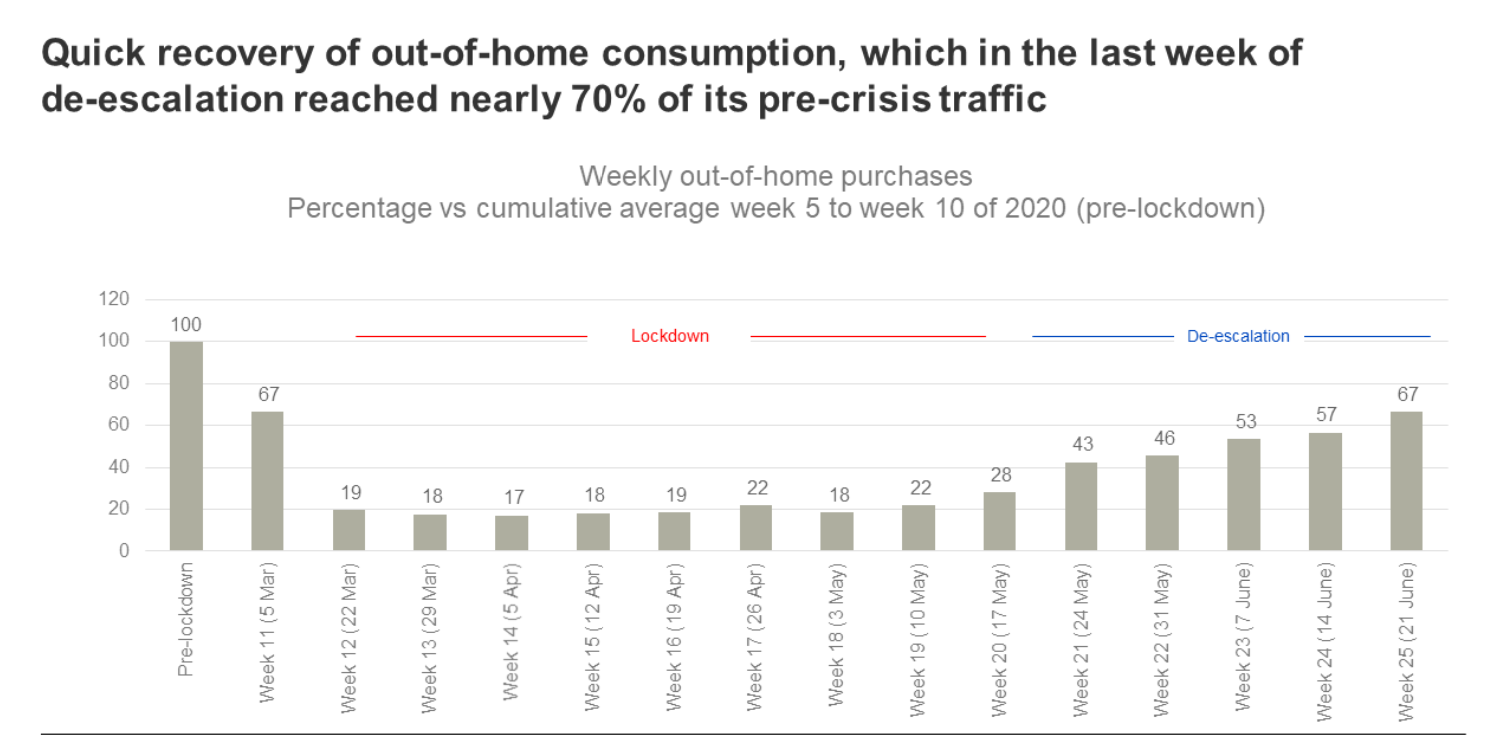Kantar data shows a promising recovery for the out of home (OOH) sector. In the final week of the de-escalation of lockdown, which ended on 21 June, out-of-home consumption (OOH) reached nearly 70% of the levels prior to the COVID-19 health crisis.
As such, weekly out-of-home purchases, which had fallen by up to 83% during the strictest weeks of lockdown, have gradually regained ground as the phases to re-open Spain have run their course.
This growth has kept pace over time and has even continued to perform positively in the first areas of the country to enter the de-escalation phase. The data points to a very solid recovery with no evidence of a 'champagne' effect, that is, people won’t be losing their desire to consume outside their homes. In fact, if we look at those that began the de-escalation first, we can see that a high rate of recovery in OOH consumption has held steady, with some provinces reaching nearly 90% of their pre-crisis levels.

Consequently, the growth rate of in-home consumption has slowed during as things have re-opened, approaching pre-lockdown levels.
But the easing of mobility restrictions has not only spurred the recovery of the hotel, restaurant and café channel (Horeca), it has also helped those offering out-of-home consumption, such as hypermarkets, supermarkets, traditional food stores, petrol stations, newsagents and vending, which are returning to pre-health crisis levels, coinciding with the end of the de-escalation period.
New habits instilled
People have developed some new habits during the weeks of lockdown. One of them is having a late breakfast, which is now bigger and includes more savoury items. In a similar vein, the new lifestyle that people are coming to terms with, working from home with the children around, has led to changes. People are now preparing more elaborate meals (over 30 minutes) more often and also more quick meals (less than 10 minutes). This creates opportunities both for ready-to-eat food as well as kitchen aids and ingredients.
Post-dinner consumption, a trend already on the rise and which has only accelerated with lockdown, has helped create new occasions for the indulgence categories.
Having prepared meals delivered is another habit that has come to stay. It seems to have removed barriers for new consumers, having captured 2.2 million customers and reached a scale of purchase opportunities nearly 30% higher than pre-crisis levels. During lockdown, the channel was mainly being driven by organised catering, while in de-escalation, independent establishments have joined the trend, leading to much greater consumer choice and promoting the growth of delivery for all consumption times throughout the day.

